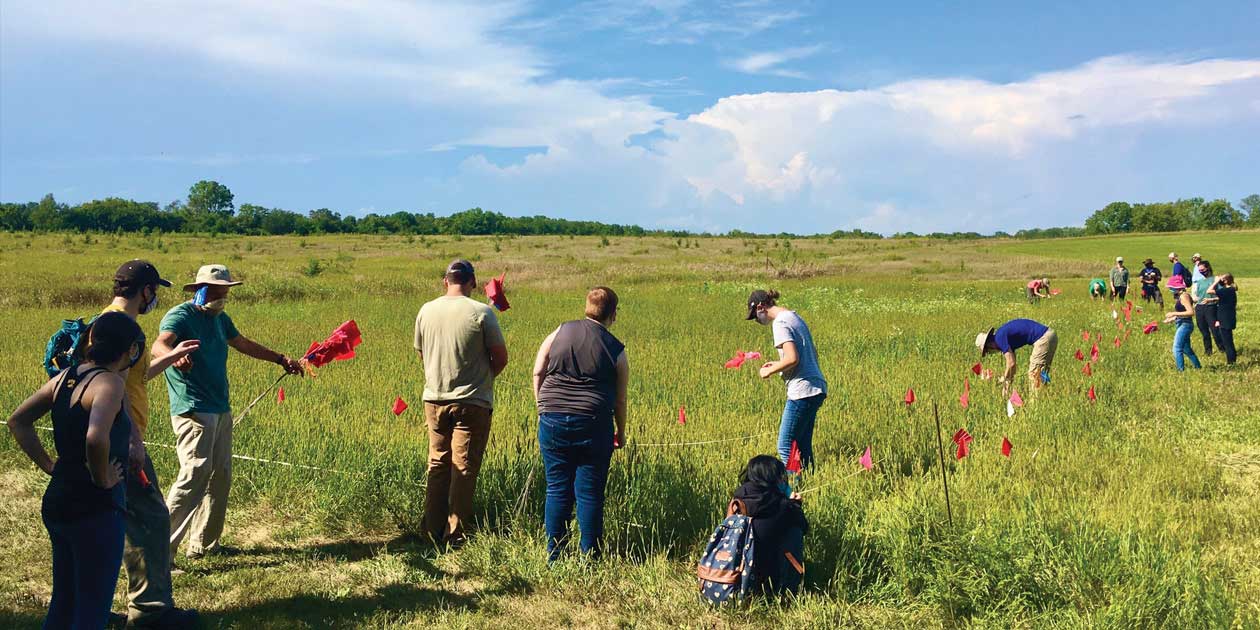Iowa Students Restore Native Prairie on Campus
 PHOTO COURTESY UI DEPARTMENT OF EARTH AND ENVIRONMENTAL SCIENCES
Students survey a prairie at the UI's
Ashton Cross Country Course.
PHOTO COURTESY UI DEPARTMENT OF EARTH AND ENVIRONMENTAL SCIENCES
Students survey a prairie at the UI's
Ashton Cross Country Course.
COURSE TITLE
Combined Field Study
INSTRUCTORS
Adjunct professor Neil Bernstein and adjunct instructor Michael Fallon, Department of Earth and Environmental Sciences
WHO TAKES IT
From analyzing soil samples to exploring the tallgrass prairie, students in this team-taught course learn about local ecosystems—and how to help preserve the environment.
WHAT THEY LEARN
Through hands-on work at the Macbride Nature Recreation Area and the University of Iowa's Ashton Cross Country Course, participants become familiar with ecological research and restoration. The course highlights the native prairie community and its role in shaping the Midwestern landscape.
HOW THEY LEARN
"This is a field-based course where students get their hands dirty," says Fallon, who teaches students to reconstruct a tallgrass prairie at Ashton Cross Country Course. "The prairie will serve as a living laboratory where students and visitors can witness a small example of a once vast and mighty landscape." Past students have planted native seeds, such as rose milkweed and black-eyed Susans, while current students survey the newly grown vegetation.
In the second half of the course, Bernstein works with students to collect and analyze field data from Macbride Natural Recreation Area and the reconstructed prairie. They apply statistics to real-life situations—such as the recent derecho that caused widespread damage in Iowa—and hone their scientific writing skills.
WHY IT'S RELEVANT
According to the Iowa Natural Heritage Foundation, prairie once covered nearly 80% of Iowa's landscape— the largest percentage in the nation. Today, less than 0.1% of that prairie remains. Those spaces provide vital wildlife habitats, while also slowing and filtering water, protecting soil health, and yielding native seeds.
"Students must understand that human ingenuity can and should be brought to bear on the topic at hand: climate change," says Fallon. "If humans can alter the face of the world, then we also are capable of healing the planet's ecosystems."
STUDENTS SAY
Geoscience major and student intern Megan Lenss assists with the prairie reconstruction. In 2018, she helped kickstart the initiative, advocating for native plant landscapes and land conservation projects on campus.
"For me, this project is a way to give back to the planet and our community," says Lenss. "Everyone can learn something from the prairie, and I hope it will make people proud to be Iowans."
